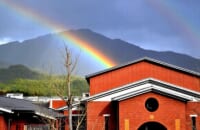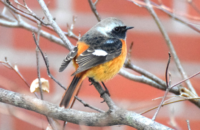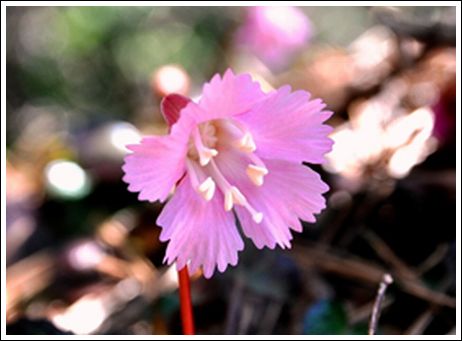
みなさんが登校したとき北方を眺めると、京都北山の山並みが、なだらかでやさしい曲線を表現していることに気づくでしょう。その山々を形づくっている地質体は、今から約2億年前のペルム紀(一部石炭紀)からジュラ紀の時代の海(パンサラッサ海:古太平洋)の海底で堆積した地層です。当時の赤道直下で堆積したチャ-トのような岩石も多く、それらを土台として写真のような美しい花々が咲き誇るのです。
イワウチワは春を代表する花で滋賀比良山系でも群落をつくって咲いています。薄いピンクの花が多いですが、真っ白の花も北山で咲いています。学内ではホトケノザ、ヒメオドリコソウ、オオイヌノフグリなどが咲き誇っています。
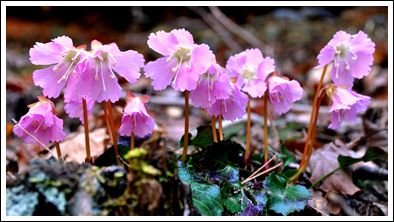 さて、“新型コロナ”が終息を見せない時期は、どうしても目先のことで頭がいっぱいになりますが、是非、学内から三方の山を眺め、そこに息づく花たちのことを想像してみて下さい。この”ひととき”はどんなに忙しい現代人にも、とても意義の大きな大切な瞬間となるはずです。
さて、“新型コロナ”が終息を見せない時期は、どうしても目先のことで頭がいっぱいになりますが、是非、学内から三方の山を眺め、そこに息づく花たちのことを想像してみて下さい。この”ひととき”はどんなに忙しい現代人にも、とても意義の大きな大切な瞬間となるはずです。
私たちには今、ヒトを生物進化の中で位置づける力と、あらゆる生物との「共感力」が求められているように思います。
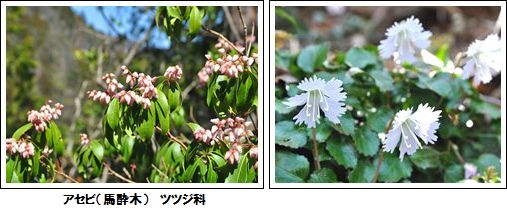
As you arrive at school, I wonder if you have noticed the gentle slopes and lines of the mountains in the north of Kyoto? The geological body that formed these mountains is the strata from the sedimentation that built up from the Panthalassa (Old Pacific) Ocean during the Permian and Jurassic periods over 200 million years ago. Around that time, under the equator there were a lot of chert like rocks in the sedimentation which is now the base for the blooming flowers in the photos.
Nippon Bells are an example of a spring flower that can be found in clusters along the Hira Mountains in Shiga. They are usually a light pink, but we can see white ones in the Northern Mountains. In our school, we can also see that Henbit, Red Deadnettle, Persian Speedwell and so on are blooming now.
With Covid-19 showing no signs of slowing down, it’s easy to be preoccupied with what is in front of us, but we should take a look at the mountains around our school and think about the breathtaking flowers that grow there. While doing so, even a busy person in these modern times should be able to feel the significance of this special moment.
I think that we humans are in a position within the biological evolution where we have the ability and are expected to show empathy towards all living things.
《Words》イワウチワ Nippon Bells、パンサラッサ Panthalassa、生物進化 Biological evolution、共感力 empathy
